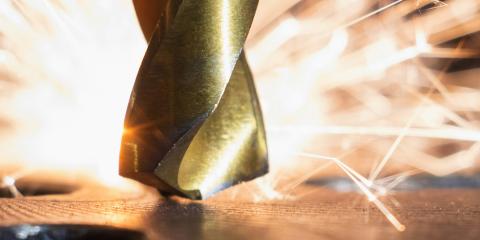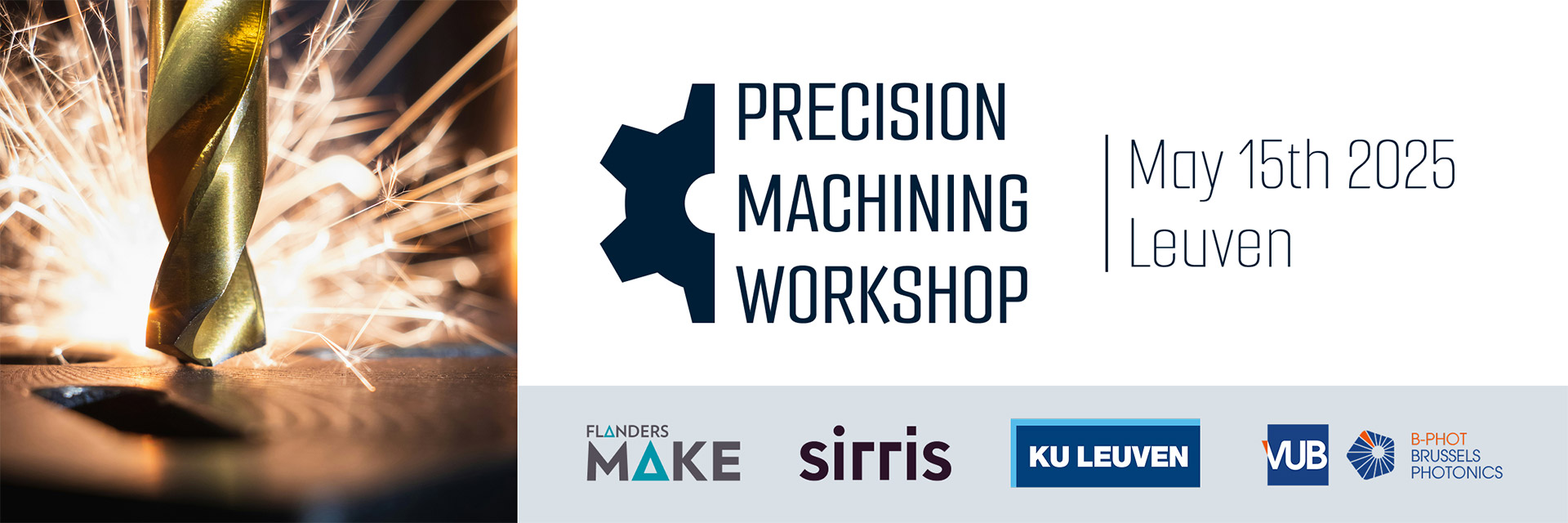Precision Machining

Evenement adres
Precision Machining
Samen met Sirris organiseren we op donderdag 15 mei 'Precision Machining' in ons kantoor in Leuven.
Precision Machining is een vakgebied in snelle evolutie. De productie brengt niet alleen hoge kosten en risico’s met zich mee, maar is ook een nichemarkt waarin je als bedrijf je concurrentiepositie wil versterken.
Samen met de experts van Sirris antwoorden onze specialisten graag op al je vragen rond precision machining, metrologie, additive manufacturing, laserbewerking en texturering, tooling en precision optics.
Praktisch
- Locatie: Flanders Make, Gaston Geenslaan 8, Leuven
- Tijdstip: Donderdag 15 mei, start om 13:30

Programma
| TIME | TOPIC |
|---|---|
| 13:30 | Welcome, Key Industrial Challenges in Precision Machining Wouter Favoreel, Flanders Make |
| 13:40 |
Machining Dynamics and Process Stability Unstable conditions such as chatter not only reduce part quality but also lead to increased tool wear, machine downtime, and production costs. By analysing the interaction between cutting forces, vibrations, and machine structure, we can better predict and prevent instabilities. The session will highlight proven strategies—such as dynamic modelling and process optimization—that enhance machining performance, improve productivity, and extend tool and machine life on the shop floor. |
| 14:00 |
Embracing the future: Digital manufacturing and the fast-evolving CNC machining landscape Digital manufacturing is revolutionizing the production environment at an unprecedented pace by leveraging data to drive manufacturing processes. In this talk, we present real-time in-process quality control (<10 µm) and process monitoring using additional sensors on machine tools. This not only reduces quality control efforts but also improves machine utility. With lessons learned from digital twins, we now optimize tool paths using realistic simulations before a single chip is cut. Further up the process chain, we are shortening the CAD-CAM chain by harnessing AI for automated tool path generation. This allows designers to understand the limits and possibilities of subsequent manufacturing. By leveraging these technologies, we create more autonomous, decentralized, yet responsive manufacturing systems, enhance manufacturing cost evaluation support for designers, and streamline the design-to-production process. |
| 14:20 |
Precision Machining of Optics for Space The fabrication of optical components needs precision levels several orders of magnitude higher than those required in conventional machining processes. In space and astronomical instrumentation, these requirements become increasingly stringent, demanding specialized workflows closely integrated with advanced metrology. In this context, we present the optical manufacturing workflow developed for the ESA EnVision mission to Venus, specifically for the production of multiple optical components for the VenSpec-H instrument. |
| 14:40 |
Process thinking in precision manufacturing enables highest quality at lowest cost It is very easy to design an expensive product. By adding unattainable tolerances, excessive surface finish requirements, and extreme cleanliness levels, you can ensure that the product will never be manufactured cost-effectively. These high-end specifications often arise from risk mitigation efforts, a false sense of safety, a lack of understanding of the cost implications of certain tolerances, or an attempt to capture physical requirements in a mechanical drawing. Especially when processing technology bridges the gap between incoming components and the final product, things can become quite unclear. To design effectively, understand the physics, identify the physical limits, and align your design and process technology with them. Otherwise, you'll spend the product’s entire life fighting physics—and spoiler alert: physics always wins. |
| 15:00 | Networking break |
| 15:40 |
Data-Driven Optimization of Machining Processes In the machining industry, adaptive machining is often referred to as taking targeted actions based on the current production situation. The successful application stands or falls with having correct (real-time) data on the one hand and the corresponding structured and digitized working methods on the other. The first is coming more and more within reach thanks to the ever-growing supply of hardware and software. For the second, one must take the step to “model-based machining,” where parameterized models (formulas) are used to identify the optimal machining process. |
| 16:00 |
Electro-physical and chemical machining & metrology Most recent research developments in non-traditional precision manufacturing and metrology as well as their applications are introduced in this session. The talk is divided into 3 parts:
|
| 16:20 |
Automating Quality Inspection Ensuring optimal quality in custom manufacturing requires advanced, integrated quality control to perform geometrical analysis, detect deviations, and identify defects. In this talk, we present innovative and smart inspection and monitoring systems, with a focus on optical methods, including cameras, structured light and laser scanners. One example is the automation of 3D scanning using our marker less scanning algorithm. This system addresses the challenge of slow, labour-intensive inspection of custom products by combining viewpoint optimization with marker less point cloud registration. The result is a significant reduction in scan time and manual setup |
| 16:40 | Panel Discussion: Current practices and future challenges |
| 17:45 | Wrap-up & Thanks! |